
What are the Different Types of Bridges?
India has the 2nd largest road network in the world, measured at 66.77 lakh km in length and counting. Given the versatile obstructions offered by the Indian geographies, this feat could not have been achieved without installing the bridges to overcome them. Whether it’s a sea, a river, canyon, or just an underpass to cross, different sizes and types of bridges adorn our roads.
What are the different types of bridges?
A bridge design is a precision act of engineering because human lives are put at stake besides transport disruption. Depending on the obstacles and many other factors, the right bridge type is selected and designed. As of date, there are 7 different types of bridges that the engineers can choose from:
Different Types of Bridges
- Beam Bridge
- Truss Bridge
- Cantilever Bridge
- Suspension Bridge
- Cable Styled Bridge
- Arch Bridge
- Tied-Arch Bridge
Beam Bridge
This is the simplest type of bridge that requires a low budget. In a beam bridge design, the girders and deck are supported by abutments and piers at each end. Construction methods could range from having multiple beams side by side with a deck across the top, to having a primary beam on either side, supporting a deck in between. The primary beams could be I-beams, trusses, or box girders. They could be halfway through or braced at the top to form a through bridge.
Because beam bridges lack built-in supports, they are usually employed for short distances (about 80 meters).
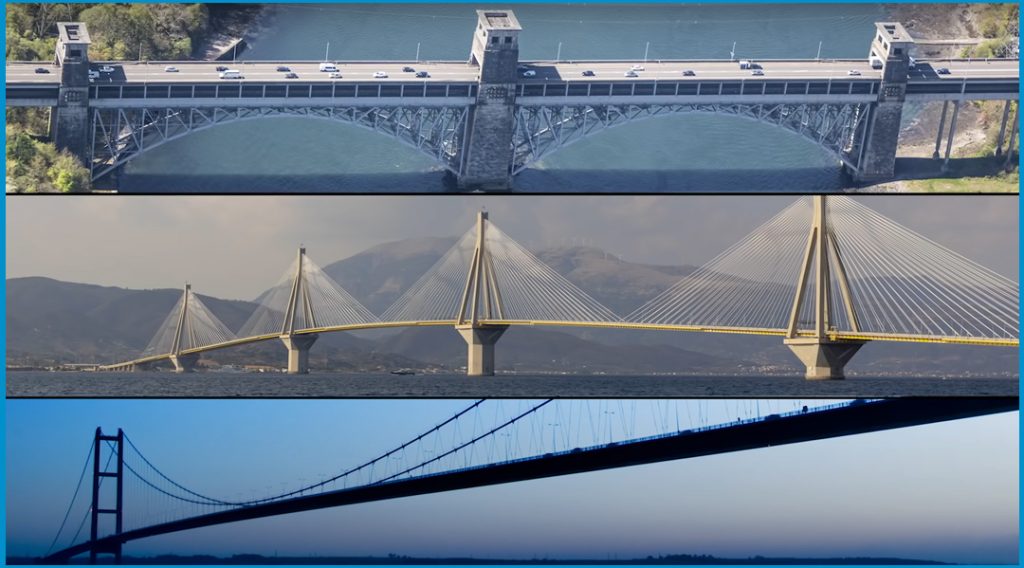
Truss Bridge
The Truss bridges are characterised by their superstructure, which is built by joining numerous relatively small structural members into a series of interconnected triangles. The traffic load on a truss bridge is divided between the arms of its triangular sections. The sections are usually made of structural steel beams, for smaller bridges, joined in a sequence of triangles by welded or riveted connections. However, for larger truss bridges, box girders are used instead of making triangles of beams.
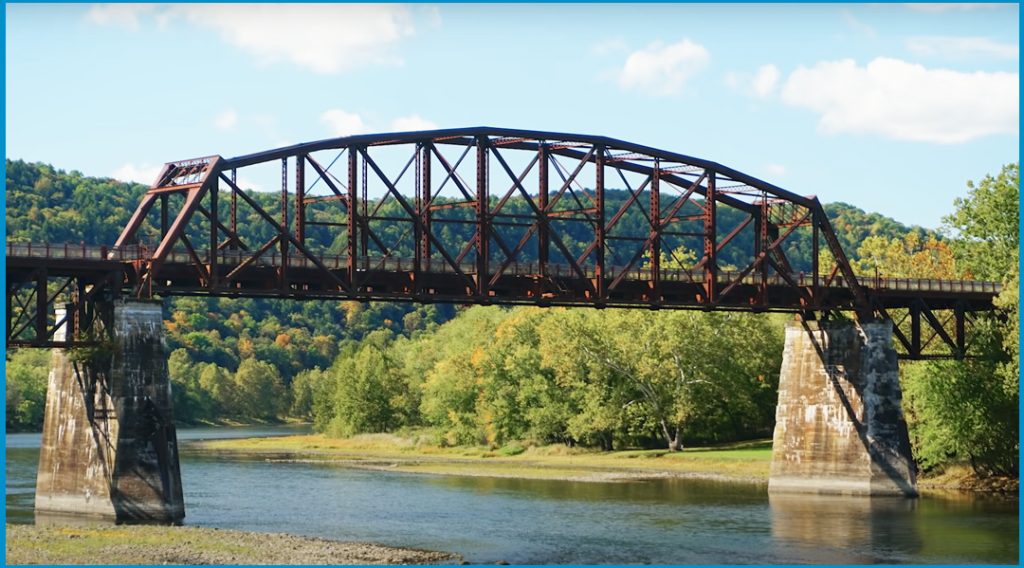
A truss provides a robust structure capable of supporting significant external loads over a long span, with component sections stressed predominantly in axial tension or compression. Individual components intersect at truss joints, also known as panel points. The top and bottom chords refer to the connected sections that constitute the top and bottom of the truss, respectively. The web of the truss refers to the sloping and vertical parts that link the chords.
Cantilever Bridge
A cantilever bridge is one that is supported solely at one end, with the other end anchored and extending horizontally into space. A cantilever bridge operates on the idea that the bridge deck or roadway is supported by a cantilever, which is a horizontal beam or structure supported solely at one end.
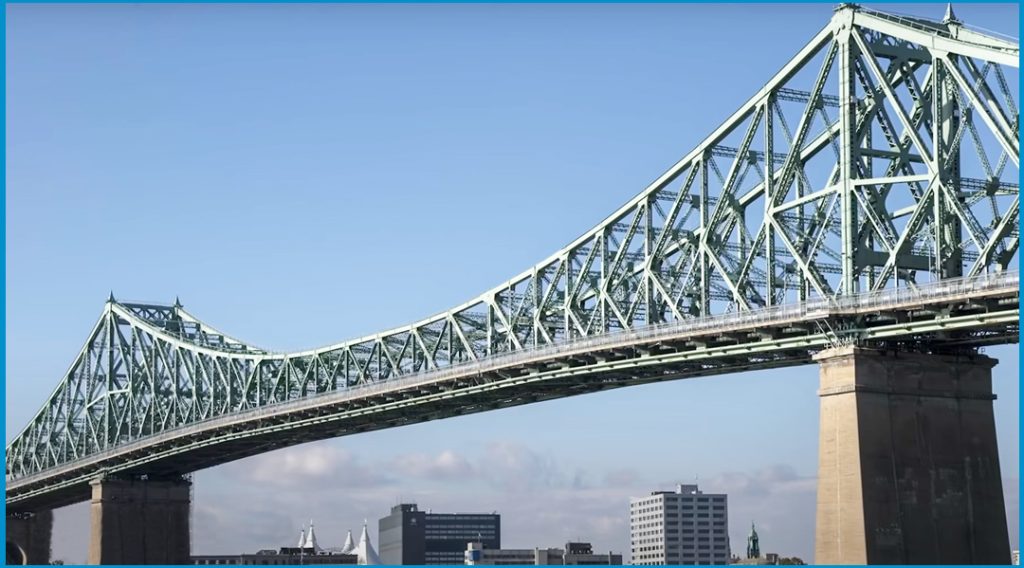
A cantilever bridge is often built of three spans, with the outer spans cantilevered—anchored at opposing ends to the opposite banks of a declivity to be traversed, such as a river valley, and the free ends of the spans extending towards each other. The cantilevered outside spans serve as the foundation for the central bridge.
Suspension Bridge
A suspension bridge is supported by tall towers or pylons joined by suspension cables. Attached to these main cables are smaller, vertical suspenders that use tension to support the bridge deck, which is the primary force that sustains suspension bridges.
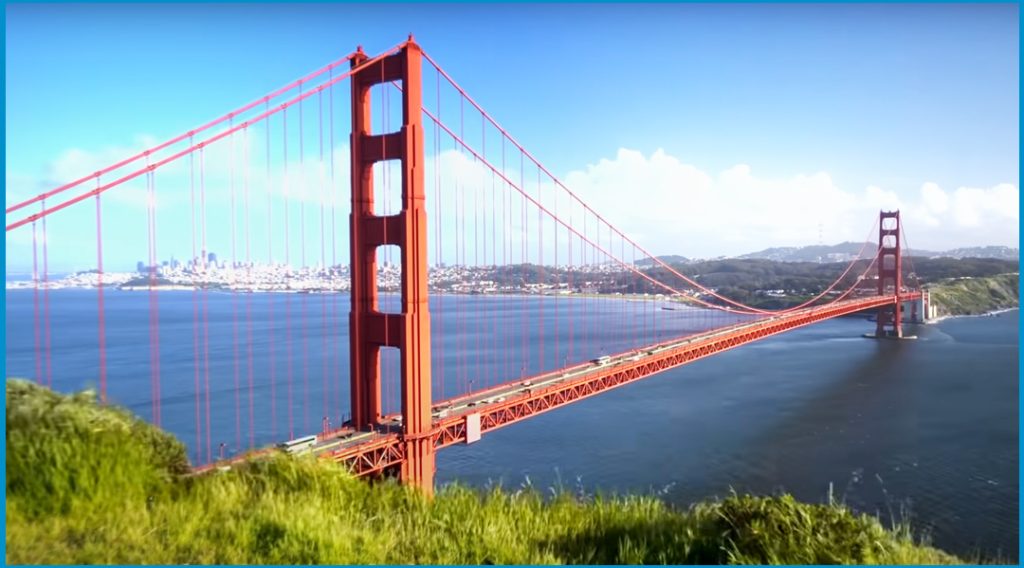
Modern suspension bridges are lightweight and aesthetically beautiful, and they may cover greater lengths than any other bridge type. They also rank among the most expensive bridges to build. Suspension bridges can be made stronger. Suspension bridges are usually built to span between 300 m and 2300 m.
Cable-stayed Bridge
A cable-stayed bridge is a kind of suspension bridge built by tying the deck slab to the tall towers with a series of suspender cables at uniform intervals. These suspenders use tension to hold the bridge deck solid and in place. There is no concept of main cables, like in a suspension bridge.
The cable-stayed bridge is best suited for spans longer than cantilever bridges but shorter than suspension bridges. This is the range where cantilever bridges would rapidly become heavier, while suspension bridge cabling would be more expensive.
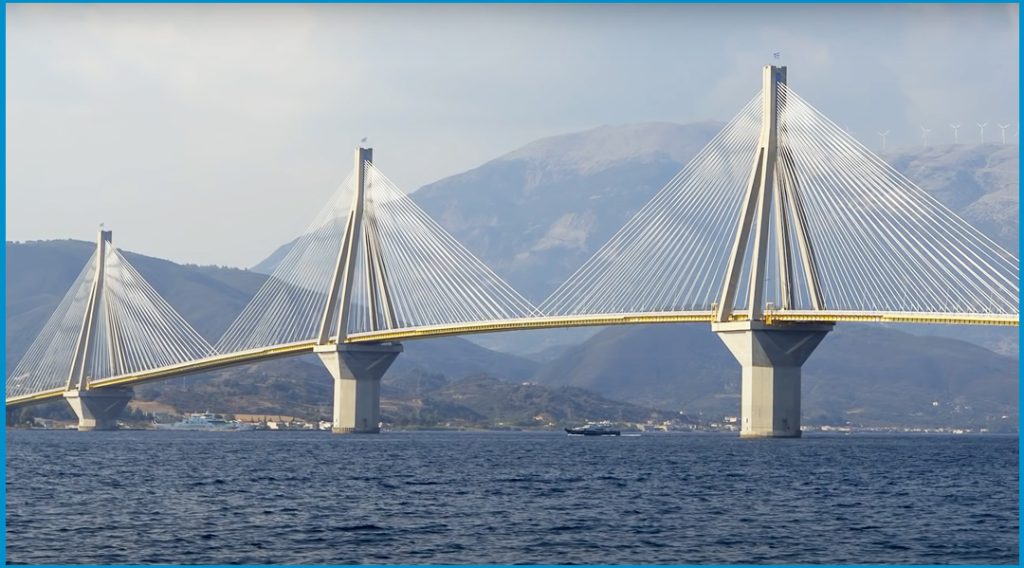
Arch Bridge
A bridge with curving arch-shaped abutments at both ends is called an arch bridge. In an arch bridge, the load from traffic and the weight of the bridge are partially transferred into a horizontal thrust, which is absorbed by the arched abutments below the road.
Because of their distinctive aesthetics, arch bridges are among the most favoured long-span bridges in the world, following suspension and cable-stayed bridges.
The structural qualities of arches vary according to their shape and the number of hinges. In general, arches get stronger as the number of hinges reduces; however, this has a significant impact on settlement.
Tied-Arch Bridge
In a tied-arch bridge, the characteristics of a suspension bridge and an arch bridge are combined. Similar to a typical arch bridge, horizontal thrust is supported by arched structures on either side of the bridge. But the arch in this type of bridge rises above the road, with suspenders from the arch joining the deck for support.
A tied-arch bridge is one in which the deck is suspended from the arch and connected by hangers. Tension in the deck carries the horizontal reaction at the abutment, which is unique to the tied arch bridge.
There can be multi-span tied-arch bridges with continuous or discrete arches in a sequence covering the span in areas where a single arch is insufficient. One such example is the Godavari Arch Bridge in Rajahmundry, India.
FAQs
What is the strongest type of bridge?
The truss bridge is the strongest, followed by the arch bridge, and the span/beam bridge comes in at a distant third, according to studies and testing done on the bridge’s designs. According to the incremental deflection averages, the truss bridge is 3.4561 stronger than the arch bridge and 10.0736 stronger than the span/beam bridge. The arch bridges are found to be 2.0147 stronger than the beam bridges.
How many types of bridge foundations are there?
Depending on the type of soil, load factors, depth of water, river flow, and many other factors, there are seven types of bridge foundations.
- Spread or open a foundation.
- Raft foundation.
- Grillage foundation.
- Inverted arc foundation.
- Pile foundation.
- Well foundation
- Caisson foundation.
What type of bridge is the Forth Bridge?
The Forth Bridge is a cantilever rail bridge across the estuary of the River Forth in Scotland.
How many types of bearings are used in bridges?
There can be several types of bridge bearings. Still, the most commonly used ones in modern bridges are elastomeric bearings, pot bearings, spherical bearings, rocker bearings, roller bearings, and slide bearings. The type of bridge bearings chosen for a bridge depends on factors like the predicted load weights, the span length, and the space available for bearing access.
What type of bridge is the Bandra-Worli sea link?
The Bandra-Worli sea link is a cable-stayed bridge with pre-stressed viaducts on each side. The end-to-end length of the bridge is 5.6 km.
